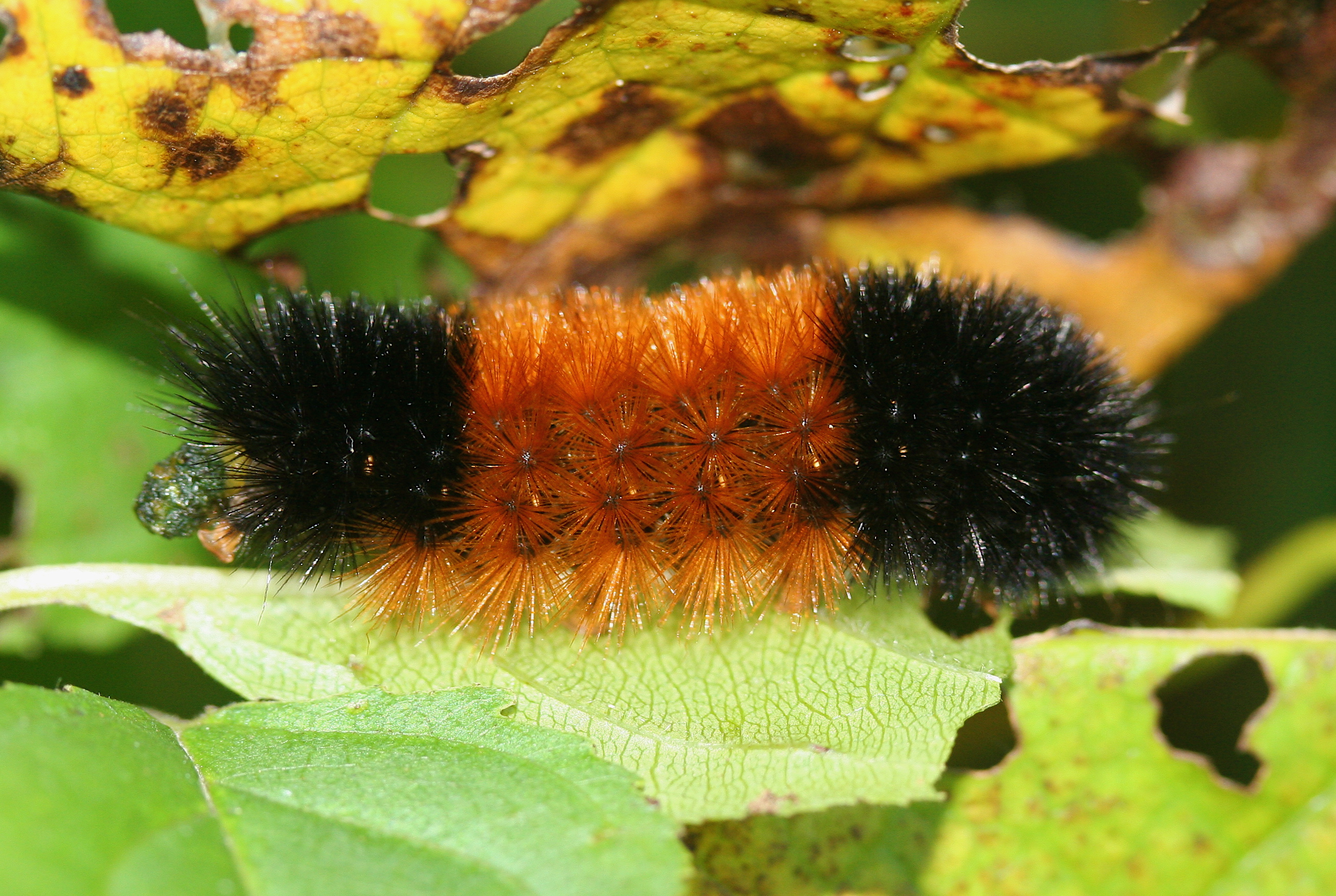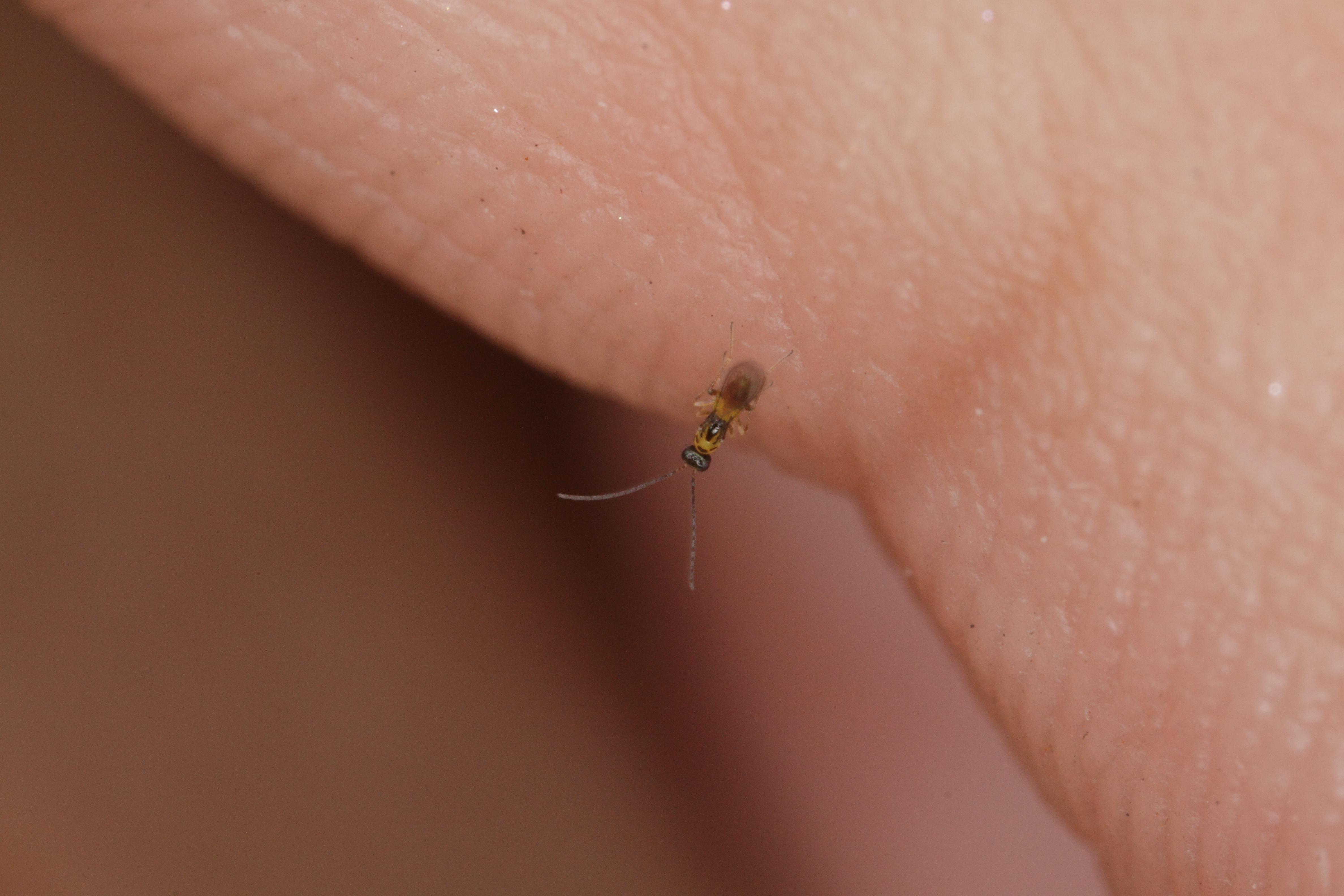During the last stretches of winter, one can become desperate for any sign of spring. In fact, I’ve been spending a fair bit of time looking for one sign in particular: hot, stinky plants. Let me tell you why I’m excited for the sight of smelly flora.
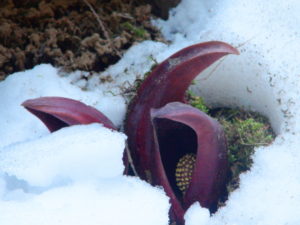
Here in the north, spring is still a ways off, and a few days of bright winter sun did little to clear the deep snow packs in the forest. But even under the weight of cold and ice, the stage is set for early rising flowers. One of the first to bloom in New England, in fact, is also one of the smelliest. Skunk cabbage (Symplocarpus foetidus), a relative of the peace lilies (of houseplant and office hallway fame), begins to emerge mid-March in eastern forests from North Carolina to Canada. (USDA 2018)

The inflorescence is the most prominent part of S. foetidus once it first appears. The skunk cabbage floral parts are characteristic of the aroid plant family, Araceae. They consists of a spadix, a column of many tiny flowers borne on a short thick stem.

This cluster of flowers is enclosed by a leaflike spathe, which is usually colored to attract pollinators. The yellowish to brownish purple colors are meant to attract carrion flies and beetles.
Floral parts can differ significantly among species in complexity and size. The award for largest inflorescence goes to a of cousin of skunk cabbage, Amorphophallus titanum. This titanic floral spike can reach heights of 6 feet high and 3 ft wide. Additionally, many aroids heat up their floral structures. With many of its relatives in the tropics, skunk cabbage may have migrated from warmer climes by using this adaptation (Knutson 1979).
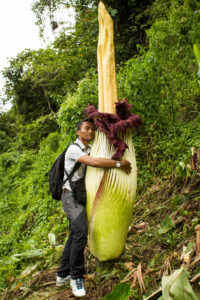
S. foetidus shrugs off late winter cold by generating its own warmth. Most plants differ from animals by remaining the same temperature as the air surrounding their bodies. But skunk cabbage, along with some of its tropical relatives, can ramp up floral temperatures hot enough to melt ice and snow. For a period of about 14 days, the plant’s inflorescence acts as a mini-furnace. The surrounding leaf-like spathe traps heat around the floral structures. Even on chilly March mornings barely above freezing, the hot spadix keeps its home a balmy 72ºF. The warm stink of skunk cabbage can seem downright agreeable when compared to the blistering 114ºF of the split-leaf philodendron flower. The production of heat also coincides with the maturation of pollen, and once clear of the snow pack, skunk cabbage flowers lure pollinators with a variety of odors (Knutson 1978).

Bees find some of their earliest spring food from the fragrant flowers of skunk cabbage. Forager bees–which normally prefer balmier weather–are lured out of the hive at chilly temps of 42ºF. While the inflorescence entices bees with its sweet smell, the damaged tissues of the plant body release a more pungent odor. The smell has been described as a mixture of skunk spray, rotting meat and garlic (Williams 1919). Compounds with evocative names like “skatole” and “cadaverine” float through the air, helped by the pulsating heat of the inflorescence (Smith and Meeuse 1966). These stink compounds work together with the maroon mottling of the spathe to lure in carrion feeders. Blowflies, flesh flies and beetles are unwittingly enlisted as pollinators when they investigate the source of the chemical trail, and even spiders benefit from the reeking banquet, stretching their webs across the opening of the spathe and snaring any hapless flyers-by (Knutson 1979).
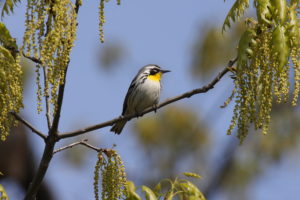
The non-floral parts of the plant provide services for all sorts of animals. Pheasants dine on the leaves while bears paw up the thick, sturdy underground stem (rhizome) with apparent relish. Slugs munch on leaves as well as pollen. The yellow throat, a common warbler, has been known to nest among the leaves of the plant. The seeds provide another meal for birds once the plant fruits (Holland and Kaneko, 2010). So while some may see this plant as a gross oddity, I am quite excited to go on the hunt for these stinky treasures.

References
- Knutson, R. M. (1972). Temperature Measurements of the Spadix of Symplocarpus foetidus (L.) Nutt. American Midlands Naturalist 88:251-254.
- Knutson, R. M. (1974) Heat Production and Temperature Regulation in Eastern Skunk Cabbage. Science 186:746-747.
- 3. Knutson, R. M. (1979). Plants in Heat. Natural History.
- Holland, M. and Kaneko, C. (2010). Naturally curious. North Pomfret, Vt.: Trafalgar Square Books.
- Smith, B. N. and Meeuse, B. J. D. (1966) Production of Volatile Amines and Skatole at Anthesis in Some Arum Lily Species. Plant Physiology 41, 343–347.
- USDA, NRCS. (2018). The PLANTS Database (http://plants.usda.gov, 21 March 2018). National Plant Data Team, Greensboro, NC 27401-4901 USA.
- Williams, K. A. (1919). A Botanical Study of Skunk Cabbage, Symplocarpus foetidus. Torreya 19:21-29.


